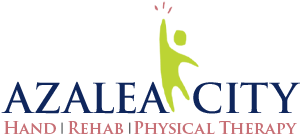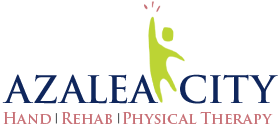Shin Splint Relief In Mobile AL

If you're a runner, athlete, or someone who spends a lot of time on your feet, you may have encountered the nagging pain of shin splints. This common condition can slow you down, disrupt your fitness goals, and make even simple activities uncomfortable. However, with the right treatment plan-particularly through physical therapy/occupational therapy-shin splints in Mobile AL can be managed and prevented from returning.
Azalea City Hand and Rehab and Physical Therapy explores everything you need to know about shin splints, including their symptoms, causes, diagnosis, and how physical therapy/occupational therapy can help you recover.
What Are Shin Splints in Mobile AL?
Shin splints, medically known as medial tibial stress syndrome, refer to the pain and discomfort that occurs along the front or inner edge of the tibia, commonly known as the shinbone. The condition typically develops when there is stress and inflammation in the muscles, tendons, and bone tissue around the shin.
Shin splints are most often associated with overuse injuries in athletes, runners, dancers, and individuals who engage in high-impact activities. The repeated stress on the shinbone and surrounding tissues can lead to inflammation and small tears, resulting in pain.
While shin splints are common, especially among people who ramp up their exercise routines too quickly, they should not be ignored. Without proper care, shin splints can worsen and potentially lead to more serious conditions, such as stress fractures.
Symptoms of Shin Splints in Mobile AL
Shin splints can be painful and uncomfortable, making it difficult to maintain your usual level of activity. If you're experiencing any of the following symptoms, you may be dealing with shin splints:
- Aching or Throbbing Pain: The most common symptom of shin splints is a dull, aching pain along the inner part of your shinbone. The pain often occurs during or after physical activity and may be more pronounced with high-impact activities like running or jumping.
- Tenderness and Soreness: You may notice that your shins feel tender to the touch, especially along the inner edge of the tibia. This tenderness can extend over a large area of the lower leg.
- Swelling: Mild swelling around the shinbone can occur as a result of inflammation in the surrounding tissues.
- Pain that Worsens with Activity: As you continue to engage in high-impact activities, the pain from shin splints may worsen, making it difficult to run, jump, or even walk without discomfort. The pain typically subsides with rest, only to return when activity resumes.
It's important to listen to your body. While shin splints may start as a mild discomfort, continuing to push through the pain can exacerbate the condition and lead to more severe problems.
What Causes Shin Splints?
Shin splints are primarily caused by overuse and repetitive stress on the muscles, tendons, and bone tissue in the lower leg. However, several factors can contribute to the development of shin splints. Understanding these causes can help you prevent the condition from recurring. Here are the most common causes of shin splints:
- Sudden Increase in Physical Activity
One of the most common triggers for shin splints is a sudden increase in the intensity or duration of physical activity. For example, runners who increase their mileage too quickly or athletes who start a new training program without proper preparation are more likely to develop shin splints. The body needs time to adapt to new levels of stress, and pushing it too hard, too fast, can lead to injury. - Flat Feet or Overpronation
Individuals with flat feet or overpronation (when the foot rolls inward excessively) are at a higher risk of developing shin splints. Flat feet can cause improper distribution of weight and stress on the lower leg, leading to strain on the muscles and tendons surrounding the shinbone. - Worn-Out or Improper Footwear
Wearing shoes that don't provide adequate support, especially during high-impact activities, can contribute to shin splints. Old or worn-out shoes lose their cushioning and shock absorption abilities, increasing the impact on the lower legs. - Running on Hard or Uneven Surfaces
Running or exercising on hard surfaces, such as concrete or asphalt, increases the impact on the legs and can lead to shin splints. Additionally, uneven terrain or running on inclines can place extra stress on the muscles in the lower leg. - Weak or Tight Muscles
Muscle imbalances, weakness in the lower leg muscles, or tight calf muscles can contribute to shin splints. Weak or tight muscles may not be able to absorb the shock from physical activity effectively, leading to increased stress on the shinbone.
How Are Shin Splints Diagnosed?
If you suspect you have shin splints, it's important to get a proper diagnosis to rule out other potential injuries, such as stress fractures or compartment syndrome. Here's how shin splints are typically diagnosed:
- Physical Examination
Your healthcare provider or physical therapist will begin by performing a thorough physical examination of your lower leg. They'll ask about your activity levels, symptoms, and the type of pain you're experiencing. They may also press along the shinbone to assess tenderness and check for swelling. - Range of Motion and Strength Tests
Your physical therapist may conduct range of motion and strength tests to assess the mobility and flexibility of your lower leg muscles. These tests help determine if muscle imbalances or weakness are contributing to the condition. - Imaging Tests
In some cases, your healthcare provider may recommend imaging tests, such as X-rays or MRI scans, to rule out other conditions like stress fractures. These tests can provide detailed images of the bone and soft tissues in the lower leg.
Once shin splints are diagnosed, the next step is developing a personalized treatment plan. Physical therapy/occupational therapy is one of the most effective ways to manage and prevent shin splints, and we'll discuss how it can help in the next section.
How Physical Therapy/Occupational Therapy Helps People with Shin Splints
Physical therapy/occupational therapy plays a crucial role in treating shin splints by addressing the root causes of the condition, reducing pain, and preventing future injuries. Here's how physical therapy/occupational therapy can help:
1. Pain Relief and Inflammation Management
The first goal of physical therapy/occupational therapy is to alleviate pain and reduce inflammation in the affected area. Your physical therapist may use various techniques to manage your symptoms, including:
- Manual Therapy: Hands-on techniques such as massage and soft tissue mobilization can help improve blood flow to the injured area, reduce tension in the muscles, and alleviate pain.
- Cold Therapy: Applying ice packs to the affected area can help reduce inflammation and numb the pain.
- Electrical Stimulation: In some cases, electrical stimulation may be used to relieve pain and promote healing by improving circulation to the lower leg.
2. Stretching and Flexibility Exercises
Tight muscles, especially in the calves and Achilles tendon, can contribute to shin splints. Your physical therapist will guide you through stretching exercises that target the muscles in your lower legs to improve flexibility and reduce tension.
3. Strengthening Exercises
Strengthening the muscles around your lower leg is key to preventing shin splints from returning. Your physical therapist will develop a personalized exercise program that focuses on building strength in the calf, shin, and foot muscles. Strengthening these muscles will help improve shock absorption and reduce the strain on your shinbone during physical activity.
4. Gait Analysis and Correction
If improper running or walking mechanics are contributing to your shin splints, your physical therapist may conduct a gait analysis to assess your movement patterns. They'll look for issues like overpronation or improper foot strike and provide corrective exercises to improve your form.
5. Footwear and Orthotic Recommendations
Your physical therapist will evaluate your footwear and may recommend more supportive shoes or custom orthotics to improve foot alignment and reduce stress on your shins.
What Should You Do If You Think You Have Shin Splints?
If you suspect you have shin splints, taking immediate steps to manage the condition can prevent it from worsening. Here's what you should do:
- Rest and Reduce Activity: The first step in treating shin splints is to rest the affected area. Avoid high-impact activities like running or jumping that could aggravate the condition. Give your legs time to heal before resuming intense exercise.
- Ice the Affected Area: To reduce inflammation and relieve pain, apply ice to your shins for 15-20 minutes at a time, several times a day.
- Consult a Physical Therapist: Early intervention with physical therapy/occupational therapy can help you recover faster and prevent the condition from becoming chronic. A physical therapist will create a personalized treatment plan that addresses the underlying causes of your shin splints.
- Modify Your Activity Level: When you're ready to return to physical activity, start slowly and gradually increase the intensity to avoid re-injury. Your physical therapist can guide you through a safe return-to-activity plan.
Treat Shin Splints the Right Way with Physical Therapy/Occupational Therapy
Shin splints can be frustrating, but they don't have to keep you sidelined for long. With the help of physical therapy/occupational therapy, you can reduce pain, improve mobility, and strengthen your legs to prevent future injury. Whether you're a runner looking to get back on the track or someone dealing with day-to-day discomfort, physical therapy/occupational therapy offers a comprehensive and personalized approach to recovery.
If you think you have shin splints, don't wait. Reach out to a physical therapist at Azalea City Hand and Rehab and Physical Therapy today to begin your journey toward pain-free movement. With the right care and guidance, you'll be back on your feet-and stronger than ever-before you know it.
OFFICE HOURS
Monday
8:00am - 5:00pm
Tuesday
8:00am - 5:00pm
Wednesday
8:00am - 5:00pm
Thursday
8:00am - 5:00pm
Friday
8:00am - 12:00pm
Saturday & Sunday
Closed
Azalea City Hand and Rehab and Physical Therapy
316 S Sage Ave Ste C
Mobile, AL 36606


